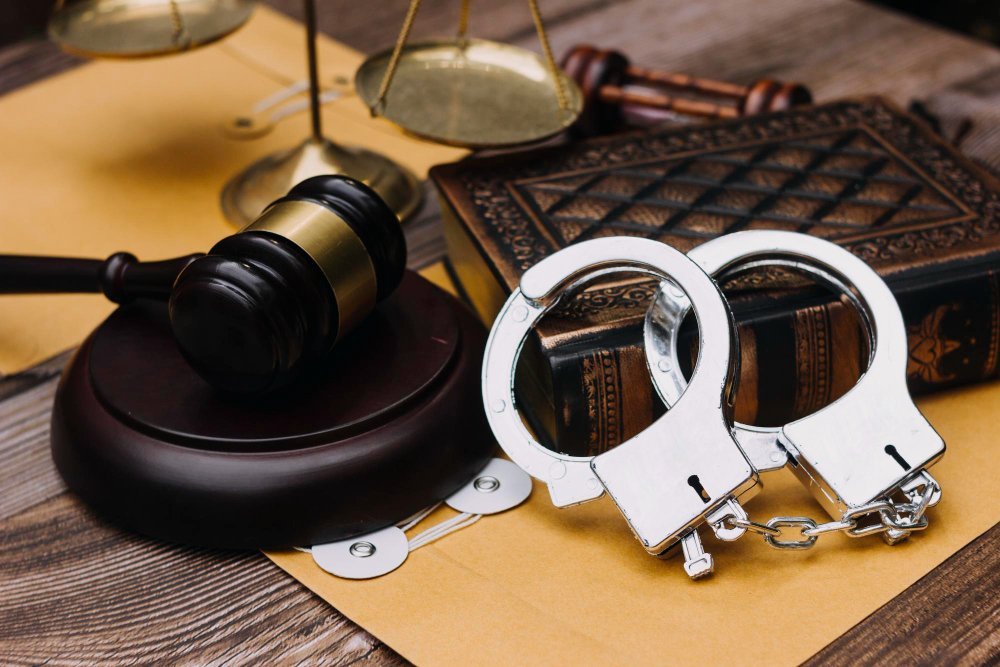Table of Contents
Key Takeaways
• Understanding federal crimes requires differentiating between federal and state jurisdiction.
• Navigating the federal legal system effectively demands awareness of the investigation process, trial proceedings, and sentencing guidelines.
• Educational resources and advocacy groups are essential in informing the public and supporting those impacted by federal crimes.
The Federal Crime Landscape
The legal landscape of federal crimes encompasses many offenses that are prosecuted under the auspices of the United States federal law. In contrast to state crimes, federal offenses often transgress state boundaries or involve national security or federal agencies and properties. These criteria call for handling by federal agencies such as the Federal Bureau of Investigation (FBI), the Drug Enforcement Administration (DEA), and the Bureau of Alcohol, Tobacco, Firearms and Explosives (ATF). For individuals ensnared in the complexities of federal charges, the counsel of adept federal crime attorneys becomes indispensable for navigating the daunting legal processes ahead.
Armed with comprehensive federal laws and substantial funding, these agencies execute detailed investigations into crimes ranging from environmental violations to counter-terrorism. It is essential to grasp that federal offenses often carry harsher penalties than state crimes due partly to extensive federal statutes designed to address the severity and complexity of these illegal activities.
Common Types of Federal Offenses
In federal law enforcement, white-collar crimes are notable for their complexity and ability to destabilize financial systems and undermine public confidence. These non-violent offenses encompass a range of illegal activities, including money laundering, embezzlement, and healthcare fraud. Conversely, drug-related crimes, especially those with interstate or international implications, are handled by federal prosecutors. Due to their magnitude and severe risks to health and safety, convictions for these crimes often result in substantial sentencing. This highlights the importance of federal crime attorneys in navigating such cases.
Weapons offenses, too, form a substantial fraction of federal criminal activity, with the ATF zealously investigating cases of unlawful gun trafficking and unauthorized possession. To control the spread of illegal firearms and curb the tide of associated violence, federal laws impose stringent regulations that federal courts meticulously uphold.
The Process of Federal Criminal Investigations
The unveiling of federal crimes begins with an intricate dance of investigation spearheaded by federal law enforcement agencies. Investigators employ an arsenal of sophisticated tools—covert surveillance, wiretapping, and confidential informants, to name a few—to gather enough evidence for a convincing case. In these processes, an indictment—a formal accusation of a significant crime—is essential, and it typically results from the work of a federal grand jury. To better comprehend this vital piece of the federal judicial process, the U.S. Department of Justice offers a thorough outlook on grand jury proceedings and their place within the broader legal system.
Once enough evidence is amassed, federal law enforcement personnel proceed with arrests, bringing the alleged offenders into the court’s custody. With its powerful reach, the federal jurisdiction ensures that those accused face charges reflective of the magnitude and scope of their alleged crimes—a testament to the system’s commitment to thorough and exact enforcement.
The Federal Court System Explained
The district courts are at the base of the federal judiciary pyramid, serving as the primary battleground for federal trials. Jurisdiction here is meticulously determined—cases involving federal laws, conflicts between states, and matters with the United States as a party are all within its purview. The layer above comprises the appellate courts or circuit courts, which evaluate the district court’s findings for legal missteps. These courts stand as the portals to the final arbiter of the land, the Supreme Court. The Supreme Court’s docket is selective and focused on cases presenting profound legal questions, often resonating through all federal jurisprudence.
Defending Against Federal Charges
In the face of federal indictments, defendants harness the constitutional right to counsel—a bulwark of the adversarial legal system. Astute attorneys not only aid in deciphering the convolutions of federal laws but also represent individuals in negotiating plea deals or during trial proceedings. These legal professionals navigate pre-trial motions, discovery, jury selection, and the myriad facets of a federal trial, ensuring that the defendant’s rights are articulated and protected throughout the judicial process.
Sentencing in Federal Courts
Once a verdict has been rendered, the attention turns to sentencing—undoubtedly one of the most critical phases for defendants. While detailed sentencing guidelines guide federal judges, mandatory minimum sentences for specific crime categories often curtails discretion. Still, defendants retain the right to appeal these decisions, with the appellate process evaluating the adherence to legal standards and the appropriateness of sentences handed down. In the backdrop of these processes stands the Federal Sentencing Commission is charged with assessing and refining sentencing policies, ensuring they align with the principles of justice and fairness.
The Impact of Federal Convictions
Emerging from the shadow of a federal conviction can be a marathon task, as the penalties extend far beyond prison sentences and fines—ripples are felt in nearly every aspect of the convict’s life. Employment opportunities can dwindle, civil rights may be curtailed, and social stigma can have enduring effects. Thus, rehabilitation and reentry programs become crucial in supporting convicts as they attempt to reintegrate into society and reclaim a semblance of their previous lives. The supportive axis of family, community programs, and federal support structures are indispensable to navigating this challenging transition.
Legal Precedents and Their Influence on Federal Cases
Judicial precedents—prior court decisions on legal issues—guide federal courts when grappling with new cases. They ensure a consistent application of the law and foster predictability in legal outcomes. The Supreme Court of the United States, in particular, casts a long shadow over the Federal Circuit with its power to establish precedents that redefine existing legal paradigms. Seasoned federal crime attorneys must keep abreast of these shifting tides to advocate effectively for their clients.
Resources for Understanding Federal Crimes
Individuals seeking to demystify the labyrinth of federal offenses have several avenues. The digital age has democratized access to information, with a wealth of educational materials available online. For instance, the American Civil Liberties Union (ACLU) has been vehement in pursuing Criminal Law Reform. It offers valuable insights and resources for those impacted by the criminal justice system.
Myths and Misconceptions about Federal Crimes
Finally, it is crucial to clear the fog of myths that often obscure the truth about the federal criminal justice system. Plea bargains, for example, are frequently misunderstood as an admission of guilt. Yet, they are often the product of strategic decision-making and negotiation by defense lawyers aiming for more lenient sentences in the face of overwhelming evidence. Similarly, the general public’s views of federal prison facilities and post-incarceration life may be based on incomplete narratives or sensationalized accounts, far removed from the multifaceted realities that former inmates encounter.







